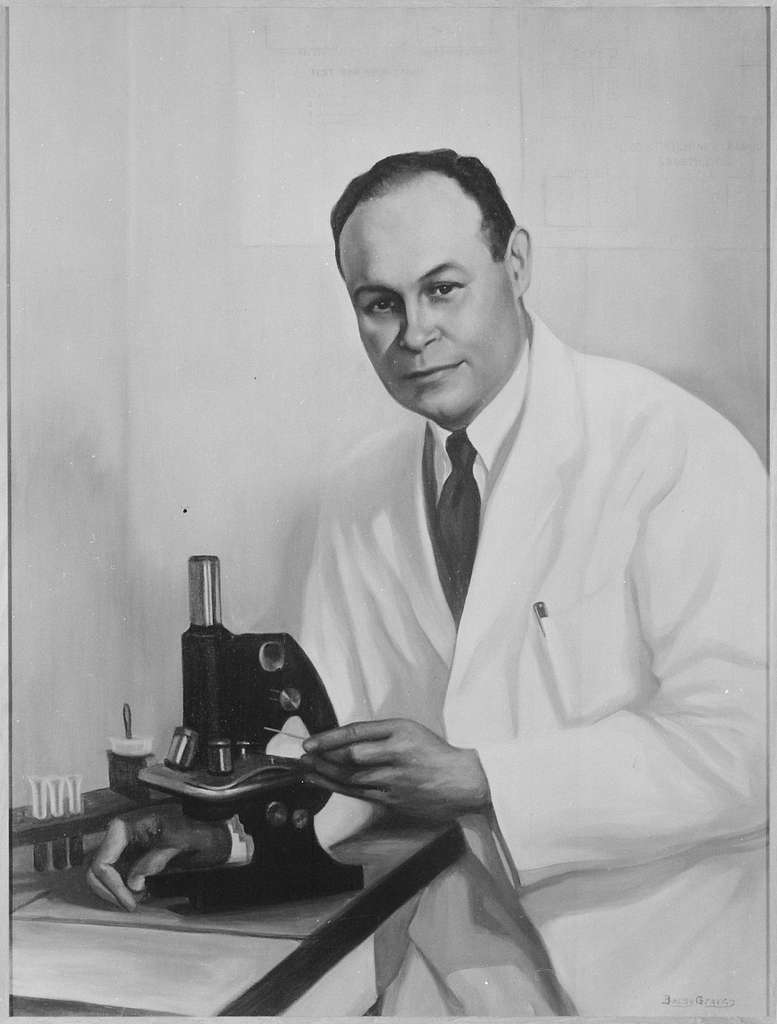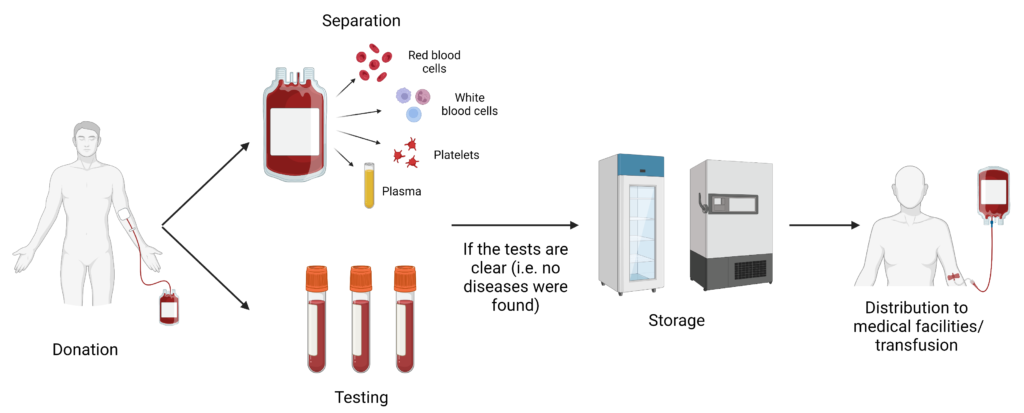Blood donation is a process by which healthy volunteers donate blood that can then be stored in a blood bank and transfused (i.e. given) to people in need. Blood may need to be replenished following a major blood loss event such as an accident or surgery. It is vital that transfused blood comes from human donors because there is currently no synthetic substitute for blood. It has taken decades of medical advancements and research by accomplished scientists to overcome challenges and make blood donation a quick, safe, and routine process.
Once blood is removed from the body, it starts to clot and break down. Before advancements in the early 1900s, donated blood had to be transfused within a few days or it would become unusable. In 1914, it was discovered that the usage of the anti-clotting reagent sodium citrate along with refrigeration enabled blood to be stored for up to a week. By contrast, today we are able to store red blood cells for up to 42 days and plasma for up to a year!
There are several types of blood donation, but the most common is whole blood donation. Whole blood contains red blood cells, white blood cells, platelets, and plasma. After donation, white blood cells are removed and the rest of the blood is separated into its remaining components. It is necessary to remove white blood cells because they are a part of an individual’s immune system and therefore might cause harm to a transfusion recipient. Each blood component serves a different role and can be used to help patients suffering from different accidents/conditions. For instance, burn patients lose a lot of fluids which can lead to shock, so they receive plasma transfusions to promote blood clotting and prevent further fluid loss. Due to its many advantages over whole blood, plasma was a crucial part of the war effort in Britain during World War II and its use saved many lives.
Dr. Charles R. Drew (1904-1950) is the main person we have to thank for standardized plasma usage and safe blood storage. Drew was an African American surgeon and researcher who pioneered research into blood storage methods. Drew accomplished these feats despite facing racial discrimination throughout his career such as the segregated medical school system and the initial inability to see patients during his residency. Due to his intellectual brilliance, Drew overcame these hardships to achieve high success as a doctor and leave a lasting mark on science.

After earning his medical degree in 1933, Drew became a surgical resident at Columbia University’s Presbyterian Hospital. It was there where he and his advisor researched blood preservation methods and eventually set up a pilot blood bank program. Due to the success of the program, Drew helped lead the “Blood for Britain” project: a massive undertaking to collect, store, and transport blood from the US to Britain during WWII. During this project, Drew and his colleagues executed new techniques for separating plasma from blood and ensuring its safety during storage and transport.
Blood for Britain was a huge success. Afterwards, Drew helped to pilot another program with the American Red Cross which eventually became the National Blood Donor Service. Despite Drew’s contributions as an African American physician and scientist, Black donors were initially barred from donating. The Red Cross agreed to allow donations from African Americans in 1942, but they would not allow the blood to be given to white patients. Drew was outspoken against this policy of blood segregation insisting what we know today to be true: scientifically, there is no difference in blood between races.
When donating today, your blood goes through several types of testing after collection. The blood type is determined to make sure there will be no negative reactions when transfused. The four main blood type groups are A, B, AB, and O and each one can be Rh factor negative or positive. These types refer to “antigens” (which are either sugars or proteins) on the surface of your blood cells. If you receive a blood type that has an antigen different from the one(s) on your red blood cells, your immune system will react and try to fight off the foreign cells. Therefore, it is very important that the correct type be transfused.

This process of blood donation and storage are commonplace today thanks to the efforts of Drew and his colleagues. The next time you donate or receive blood, be sure to appreciate the scientific advancements that were needed to make that process possible!
Peer Editor: Erin McNell